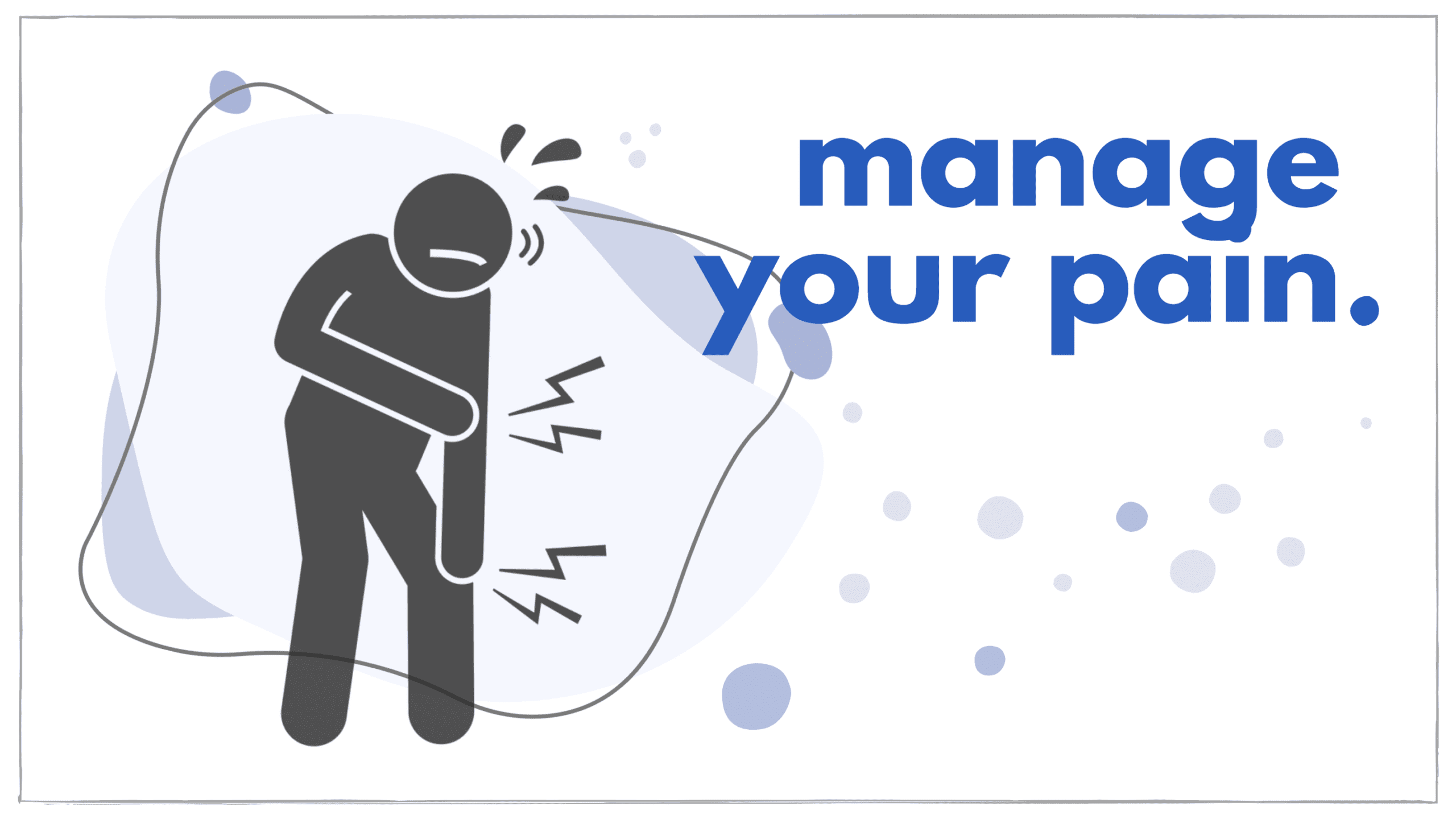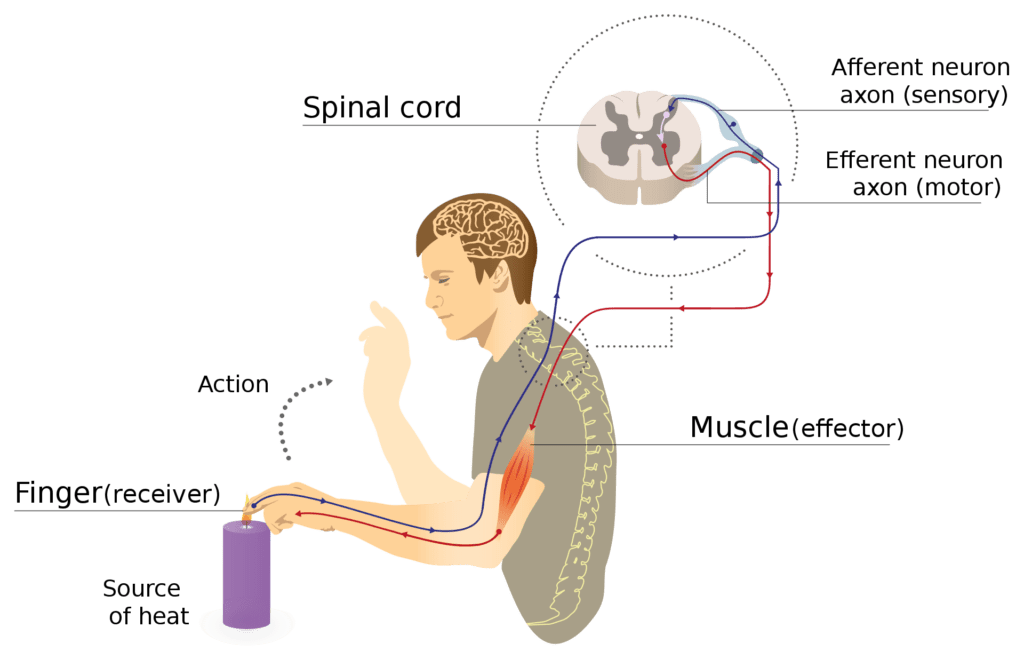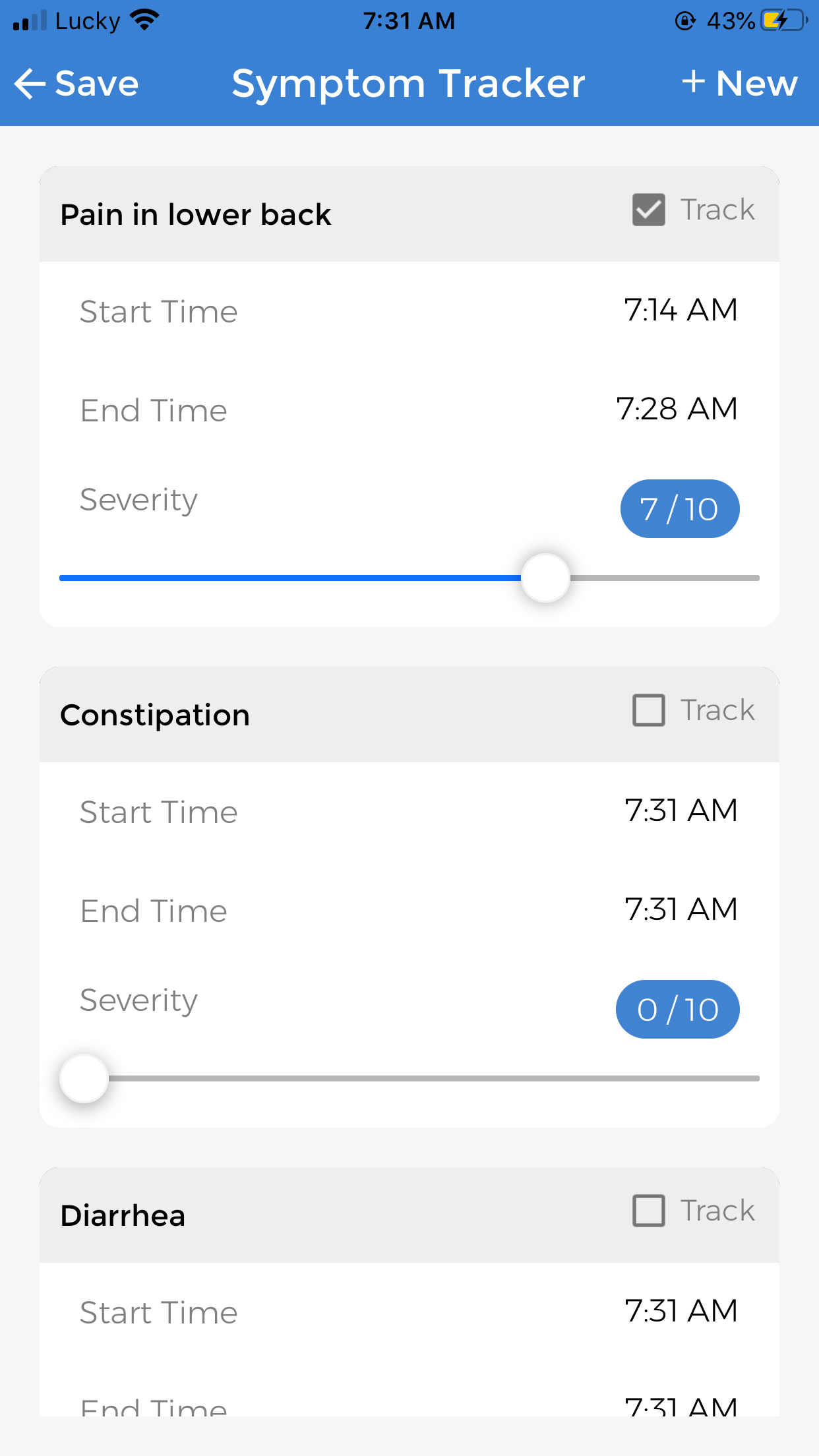
We have all experienced pain at some point in our lives. This pain can stem from various causes such as stubbing your toe on a table to tearing a muscle during a workout. Therefore, becoming familiar with pain management techniques can be very useful. Firstly, however, how do we define pain exactly? What are some of the best ways to manage pain?
Using Pain Management Techniques
Pain is defined as any uncomfortable sensation that we experience. This uncomfortable sensation is usually linked to tissue damage and it is a way for the body to react to prevent further tissue damage.
People feel the sensation of pain when signals travel through the body’s nerve fibers towards the brain for interpretation. We each may experience pain differently and in a variety of different ways.
Pain can be long-term pain or short-term. Pain can also be limited to one area or it could spread across the body. Furthermore, pain could feel like anything from a dull ache to a sharp burning sensation. Pain management techniques can be extremely useful to patients who are experiencing consistent pain that is interfering with their daily activities.
An example of pain
We feel pain when specific sensory nerves in our body called nociceptors detect tissue damage and transmit this information via the spinal cord to the brain.
Here is an example to explain the neural pathway that pain messages take in the body. When you pour a hot coffee in the morning, you accidentally touch the hot surface of the water heater, stovetop or cup. This instantly causes a signal to be sent to the spinal cord via a reflex arc.
This subsequently causes an instant contraction of the muscles in our hands and arms so that we pull away very quickly from the hot surface. This instinctive reflex prevents us from further damage to the tissue. Usually this reaction is done so quickly that the message has not yet reached the brain. This is why we may experience a momentary delay until we experience the sensation of pain in our brain. As you can see in the diagram below, the reflex arc does not involve the brain.

Types of pain
Pain can be divided into a few types, but generally it is categorized as acute or chronic. It is important to know which type of pain you are experiencing in order to utilize the appropriate pain management techniques.
Acute pain
Acute pain refers to an intense and short-lived pain. This goes back to the example of touching a hot coffee cup which involves activating a reflex arc. This acute pain usually triggers our body’s fight or flight mechanism. Acute pain can be broken up into different types of pain as described below:
- Somatic pain: Person feels superficial pain on the skin and or soft tissue just below the skin.
- Visceral pain: This pain emerges from the internal organs and the linings of cavities within the body
- Referred pain: Referred pain is when a person feels pain at any location other than the source of the damage. For example, people often report shoulder pain when they experience a heart attack.
Sometimes, when there are lots of cases of acute pain, this can create a build-up of signals within the body’s central nervous system (brain and spinal cord). This can lead to an overstimulation and usage of the nerve fibers. The result of this is feeling pain for longer than a person would.
Chronic Pain
The second type of pain is chronic pain. This lasts far longer than acute pain and there is often no cure. Chronic pain can be mild and or it can be severe and at times, continuous. For example, arthritis is a continuous feeling of persistent pain whereas migraines is a feeling of intermittent pain. Migraines occur repeatedly but they stop in between. The main difference between chronic pain and acute pain is that fight or flight reactions eventually stop with people experiencing chronic pain. This is because their nervous system eventually adapts to the pain stimulus.
Describing Pain
Another form of pain is describing pain, which can be broken down as follows:
- Neuropathic pain: This form of pain is usually the result of damage to nerves connecting the brain and the spinal cord. It can feel like electric shocks to the body, which result in general discomfort and at times, a numbing effect.
- Phantom pain: This is a form of pain which occurs after the amputation of a limb. These painful sensations occur are when the patient feels it originating from the missing limb
- Central pain: This pain occurs due to damage through swelling or obstruction of blood supply, degeneration, tumors and bleeding in the brain or spinal cord. Central pain is usually continuous and ongoing. It can range from being mild to extremely painful.
Why is it important to understand and define different types of pain?
Firstly, as patients we need to be familiar with and understand what types of pain there are so we can easily and accurately describe it to a doctor. Doctors will need to know all the information they can in order to describe the best possible solutions. Different types of pain are best dealt with different types of pain management techniques.
CareClinic is also a great way to keep track of chronic pain over an extended period of time. There is a diary function and a daily check-in function which allows for patients to record how they feel simply by scrolling a slider.
The app allows patients to connect with their family doctor, caregiver or a family member and share personalized care-plans. This way, your doctor, family and peers will be able to see how you are feeling and how your treatment plan is going at all times.
CareClinic can also greatly assist doctors when trying to make a diagnosis and prescribe a treatment plan. Doctors are able to access an accurate and detailed recount of their patient’s pain history and understand the following:
- What type of pain it is that the patient may be experiencing (acute, chronic, describing)
- The site and area in which the patient is experiencing the pain
- What is triggering and what is relieving this pain
- The times that the pain occurs throughout the day
- How the patient understands their pain and how it affects their mood
The Cost of Pain
The cost of pain ranges from the cost to our minds, our moods, the ability to study, go to work and be productive. Therefore understanding the true cost of pain on a macro-scale is important.
In 2012, Health economists from Johns Hopkins University conducted a research project regarding the cost of pain. Their findings concluded that in the United States, the annual cost of chronic pain was as high as $635 billion per year. To put that massive number into perspective, that costs the economy more than the annual cost to treat cancer, heart disease and diabetes.
A 2018 CBC article reported Janet Lewis’s story, in which she was diagnosed with fibromyalgia, a condition which results in daily chronic pain. She was and still is unable to work and has been on disability pension for 14 years. Fibromyalgia is a condition which comes with multiple symptoms. This includes feeling general fatigue, experiencing a lack of concentration, mood-swings and digestive symptoms. Janet herself describes it as the feeling of waking up with the flu every single day.
In 2018, Statistics Canada also reported that in Canada around six million people in the country suffer from chronic pain. This comes at a huge cost to the economy, as people who suffer from chronic pains take a number of days off from work. Businesses may also need to accommodate better for those that are dealing with chronic pain.
When taking everything into account, the losses to the Canadian economy does not quite match that of the United States but it also racks up hundreds of millions of dollars in lost productivity.
The cost of pain is evidently large, therefore it is important that pain management techniques are used by patients to prevent and reduce their pain as early as possible.
How to manage chronic pain
Doctors are able to treat different types of pains in a variety of different ways. There may not be one solution for all types of pain. One form of relief may not bring patients relief for another form of pain. The following are the common ways we manage chronic pain
Acute pain treatment
Acute pain treatment generally includes taking some form of pain medicine. This will depend on the recommendation and advice of your doctor and trained medical professionals. Examples of such treatment medication for acute pain are described below.
Non-steroidal Anti-Inflammatories (NSAIDs)
Pain management techniques can be pharmacological. Analgesics or pain reliever medications can be very beneficial for patients who find non pharmacological pain management to be ineffective for them. This form of pain medicine can usually help treat pain and help a person regain their daily function. NSAIDs can be accessed over the counter or via prescription. They have a wide range of strengths. NSAIDs are suitable for treating minor acute pains. This includes but is not limited to: headaches, sprains and back aches.
NSAIDs can also help with relieving local inflammation, pain due to swelling and other similar traumas to the body. However, when NSAIDs are taken at higher dosages, they may lead to side effects. It has been reported that NSAIDs can result in digestive system effects, including bleeding. Therefore, it is important for doctors and their patients to monitor their dosage.
Ensure that you read the packaging to check that you are taking the correct analgesic and consuming the appropriate dosage. The best way to monitor the dosage would also be through personal monitoring dosage quantity with CareClinic. You can use the app to set reminders for taking your medications and check in with the app each time to take your medication. This helps to make sure you are taking your daily medications at the appropriate time and dosage.
Opioids
This pain management technique may be beneficial but it is important to continuously monitor one’s progress when using opioids. Doctors usually prescribe opioids in order to manage extreme acute pains. These could be a result of surgeries, bone fractures and cancer treatments.
However, opioids are very addictive forms of medication and usually cause patients to suffer from withdrawal. For this reason, opioids require a prescription and they require careful monitoring by a doctor to manage and administer the dosage.
Careful monitoring and a gradual reduction of opioid dosages are paramount to minimize any withdrawal effects that patients may experience.
Chronic Pain Management
There are a large number of non-drug therapies which can help with managing pain. Natural alternatives to medication for chronic pain management is important. Non pharmacological pain management can be highly effective as chronic pain usually does not subside like acute pain does. Examples of non pharmacological pain management therapies include the following:
- Psychotherapy: This form of therapy usually involves having sessions with a psychotherapist. The psychotherapist helps patients improve their understanding of pain. After gaining this understanding, the psychotherapist works with the patient to implement changes into their lifestyle. The changes aim to minimize pain intensity and build up pain resistance skills.
- Relaxation Therapies: Relaxation therapies include a large number of varying relaxation techniques and exercises for pain relief and reducing muscle tension. The majority of these exist outside of traditional medication. People undergoing relaxation therapies may choose to engage in hypnosis, yoga, massage therapy, tai-chi and others.
- Virtual Reality: There is a new and emerging trend of utilizing virtual therapy settings in order to help patients cope with chronic pain. This usually revolves around creating a serene environment and letting patients freely wander in this virtual environment. The goal is to allow patients to free their mind of their chronic pain.
- Physical Manipulation: Sometimes physiotherapists and/or chiropractors can help people relieve pain by manipulating tension from muscles within the body through the application of physical exercise and stretches
- Rest: Chronic pain is sometimes due to a certain injury or consistently overworking a part of one’s body. At times, rest might be the best option for pain relief.
- Physical therapy: Physical therapy can help with pain relief through exercise that helps relieve muscle tension. Consider trying physical therapy for pain relief.
Importance of using pain management techniques
Pain is something that needs to be controlled, as being in a state of untreated chronic pain has a profound and negative impact on your quality of life.
The consequences of unchecked pain can include the following, which can also make the pain worse:
- Increased levels of stress
- Reduced Appetite
- Sleep Disruption
- Heightened anxiety and depression levels
- A delay in the healing process
Recent studies have shown that sometimes healing can be delayed when pain that is caused by tissue damage is not relieved.
This is because uncontrolled pain has a negative effect on our body’s immune system and that constant pain can lower the body’s capacity to respond to situations such as: stress, surgeries, chemotherapy etc.
Consequences can be any of the above for unchecked pain but sometimes can be far-reaching. For example, neuropathic pain that is unrelieved can cause changes to the body’s nervous system. This can result in a contribution of further chronic pain long after the damage to that nerve has healed.
Patient’s role in sticking to pain management techniques
As patients, we play a vital role in our own pain management. We must be able to communicate and place trust into the hands of our care-team. An open channel of trust and dialogue is the best way to work together in order to deal with and manage pain.
Maintaining constant communication with the care-team and making a ‘pain log‘ to track when pain is felt, how strong it is, and whether it’s recurring or not is crucial. This will allow for your care team to formulate care plans with pain management techniques that work for you and also help them to adjust your medication as needed.
CareClinic, a free health app for pain management
The advent of technologies such as CareClinic’s health management platform can assist patients in bettering the chances of successfully managing their pain in a more efficient manner.
The CareClinic app delivers the pinnacle of convenience, as an all in one health management application which delivers health solutions right through one’s phone. The simple-to-use app has easily navigated functionalities designed to suit every patient’s needs.
CareClinic’s all in one health management app can help track, manage and improve health outcomes for patients dealing with either acute or chronic pain. The easy to use functionality allows for patients to track pain daily.
The simple to use measurement input methods allow for patients to easily check-in with the app daily. Their care-team is also able to communicate with patients through the app. This way doctors can be notified and kept up to date on their patients 24/7.
Patients are also able to keep track of exactly how they are feeling and trace the source of their pain better through using the app. No longer do patients have to rely on gathering notes, asking friends and family, or gathering their memories to describe their pain.
They can easily track it down on their phone and connect with their trusted care-team in order to stay safe all the time.
Here’s a quick video about pain and pain management techniques when living with chronic pain:




